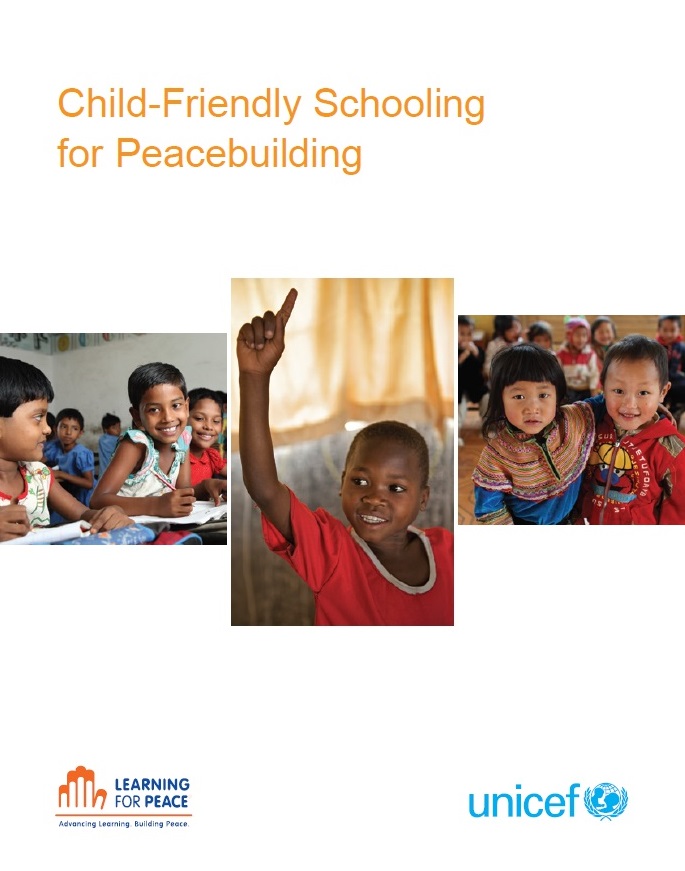Written by David Selby and Fumiyo Kagawa, this cutting-edge volume critically examines UNICEF child-friendly school theory and practice from a peacebuilding perspective and offers some twenty-eight illustrative case studies from countries experiencing or emerging from conflict in Africa, Asia, Latin America, Middle East and South-eastern Europe.
Comprising 124 pages, it begins by examining key principles and primary features of UNICEF child-friendly schooling and child-friendly education as well as new developments and focuses. The authors then turn their attention to fundamental concepts and key ideas in peacebuilding education. Applying a socioecological model of change to peacebuilding education, the authors maintain that sustainable, transformative peacebuilding education calls for multilayered, interlinked change whereby, for instance, micro-systemic changes in the classroom and school are reinforced and embedded through structural and cultural change at the macro-systemic level while being affirmed by action at the intermediate (including community) meso-systemic level. This change theory is frequently returned to as the study unfolds and is applied to each of the sixteen principal case studies.
The authors then explore child-friendly school elements through a peacebuilding lens identifying elements that are ‘peacebuilding resonant’ (i.e. already making a contribution to peacebuilding), that are ‘peacebuilding latent’ (i.e. having unrealized peacebuilding potential) and that constitute ‘peacebuilding gaps’ (i.e. areas left undeveloped by, but nonetheless organically connected to the child-friendly school concept and that, if implemented, would also fulfil an important peacebuilding function). Elements of the child-friendly school examined using this analytical spectrum include: school physical environment; school culture; curriculum; child-centered learning; student participation at school and in the community; the school as a community hub; the school as a learning organization. The study then goes on to examine the potential within system-wide child-friendly education developments for peacebuidling with sections on the professional development of teachers, the use of situation analyses, multi-sector and multi-level partnership approaches, national policy development, national-level child-friendly school teams, and national-level monitoring and evaluation. Risks and vulnerabilities that might follow from the application of child-friendly schooling for peacebuilding are then enumerated. The main text ends with recommendations for making child-friendly schooling more peacebuilding resonant. The publication also includes user friendly standards and indicators for child-friendly schools for peacebuilding in post-conflict context.
To access to the publication, click here
For details of the Child-friendly Schooling for Peacebuilding Consultancy, click here
For details of the Istanbul Child-friendly Schooling for Peacebuilding Workshop, 25-27 September 2014, click here

